CAMO : Key advantages of outsourcing this critical function
With demand for air travel continuing to grow, the role of a Continuing Airworthiness Management Organization (CAMO) has become more important than ever. A term that originated in Europe’s aviation industry, CAMO is now recognised worldwide as the process for ensuring that all commercial aircraft are maintained to the highest level of safety.
Introduced 20 years ago, CAMO is essentially an approval given by a National Aviation Authority (NAA) to an aircraft maintenance company within its region that demonstrates the firm meets certain criteria. The CAMO designation, also referred to as Part-M, is now mandatory for all EU-registered aircraft.
Continuing Airworthiness Management Organisation (CAMO) is a part of EASA’s Implementing Rules EU 1321/2014, Continuing Airworthiness. Employed by the aircraft owner /lessor directly or by the airline/operator, a CAMO manages responsibility for all continuing airworthiness activities, such as forecasting and compliance of the maintenance program, Airworthiness Directive compliance, Service Bulletin evaluation and implementation, test flights, defect rectification and the safekeeping of accurate aircraft records, for example. Like any aviation organization, a CAMO must fulfil all its requirements and is audited regularly by the respective authorities in its territory.
To obtain CAMO approval, an organization must establish that it has the required NAA-approved employees with the relevant level of training and experience; a staff training program; adequate office and document storage facilities; a secure IT infrastructure with all necessary protection and back-up protocols; and company procedures that comply with EASA Part M requirements.
The role of a CAMO, such as Air Worthy, is therefore highly complex and specialised. It requires many disciplines, all focused on aircraft safety, including: liaison with relevant authorities on behalf of an aircraft owner/lessor; finding solutions to technical issues; updating of aircraft technical manuals; performing AOG inspections and safeguarding records. When outsourced, a CAMO representative may be permanently based on-site during a heavy maintenance check or complex STC (Supplemental Type Certificate) modification, to oversee the process and ensure the schedule is kept on track.
Ultimately, the CAMO is the custodian for airworthiness of the aircraft and the eyes and ears for its owner or lessor, knowing everything about their asset’s technical status.
While some airlines prefer to have their own CAMO function in-house, many operators now sub-contract CAMO to external specialist consultancies, such as Air Worthy. Thanks to an independent CAMO’s flexibility, airlines can decide to outsource a specific element of a CAMO requirement, or during peak periods only, thereby avoiding unnecessary costs.
Efficiency and productivity growth
Subcontracting CAMO means also that internal CAMO employees have additional support when and where they need it, and they are able to work more effectively and focus on their core activity. For smaller airlines and start-up operators, sub-contracting CAMO is especially beneficial as it provides instant access to experienced knowledge.
Increases safety and reliability
Due to high licensing fees, some airlines have been known to analyze data using spreadsheet programs. Not only does this increase the opportunity for error, miscalculations can also cause safety-related issues. By outsourcing CAMO to a team of highly skilled experts such as Air Worthy, human error can be mitigated, thereby enhancing safety and efficiency.
As an EASA-certified CAMO, Air Worthy works on behalf of airlines and lessors across the world. The consultancy’s Accountable Manager, Gabriele Brescianino, said:
“Air Worthy’s extensive engineering knowledge and experience has been acquired over many years by our team of specialist engineers and network of approved technical representatives around the world. Our trusted service is comprehensive, so we are able to deliver beyond airworthiness, providing an outsourced solution that brings peace of mind to our customers. Every aircraft is an asset and Air Worthy’s main goals are to uphold aircraft safety and deliver value for clients. Ensuring that it remains at the forefront of CAMO capability, Air Worthy is in the final stages of securing an additional approval from the Italian CAA. This will extend our CAMO authority from B737NG to all B737 models.”

